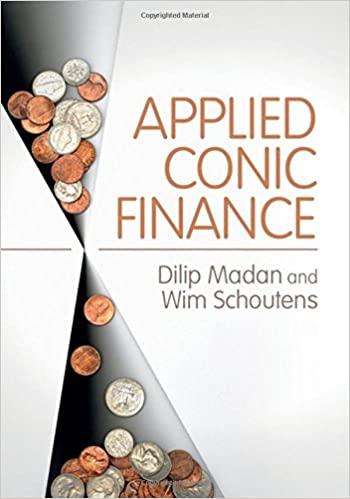Question
Ques.1 Attempt ALL multiple choice question (1 x 5 = 5) 1. 1. consider a corporate bond with a $1000 face value, 10% coupon with
Ques.1 Attempt ALL multiple choice question (1 x 5 = 5)
1.
1. consider a corporate bond with a $1000 face value, 10% coupon with semiannual coupon payments, 5 years until maturity, and currently is selling for (has a cash price of) $1,113.80. The next coupon payment will be made in 63 days and there are 182 days in the current coupon period. The clean price for this bond is closest to
| a. | $1146.50 |
| b. | $1065.70 |
| c. | $1113.80 |
| d. | $1081.10 |
2. Which ofthe costs would you consider when making a capital budgeting decision ?
a. Sunk cost
b. Opportunity cost
c. Interest expense
d. Fixed overhead cost
3.Which of the statements is False ?
a. In general, the difference between the cost of capital and the IRR is the maximum amount of estimation error in the cost of capital estimate that can exist without altering the original decision.
b. The IRR can provide information on how sensitive your analysis is to errors in the estimate of your cost of capital.
c. If you are unsure of your cost of capital estimate, it is important to determine how sensitive your analysis is to errors in this estimate.
d. If the cost of capital estimate is more than the IRR, the NPV will be positive.
4.Which of the follwoing statements is False ?
a. If investors have homogeneous expectations, then each investor will identify the same portfolio as having the highest Sharpe ratio in the economy.
b.Homogeneous expectations are when all investors have the same estimates concerning future investments and returns.
c.There are many investors in the world, and each must have identical estimates of the volatilities, correlations, and expected returns of the available securities.
d. The combined portfolio of risky securities of all investors must equal the efficient portfolio.
5.Which ofthe statements is false regarding profitable and unprofitable growth ?
a. If a firm wants to increase its share price, it must cut its dividend and invest more.
b. If the firm retains more earnings, it will be able to pay out less of those earnings, which means that the firm will have to reduce its dividend.
c. A firm can increase its growth rate by retaining more of its earnings.
d. Cutting the firms dividend to increase investment will raise the stock price if, and only if, the new investments have a positive NPV.
Step by Step Solution
There are 3 Steps involved in it
Step: 1

Get Instant Access to Expert-Tailored Solutions
See step-by-step solutions with expert insights and AI powered tools for academic success
Step: 2

Step: 3

Ace Your Homework with AI
Get the answers you need in no time with our AI-driven, step-by-step assistance
Get Started


